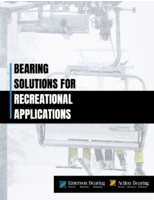Dynamic Drying Unit features closed-loop regeneration.
Share:
Press Release Summary:
In line with IPC/JEDEC-J-STD-033C standard, Model U-5002 achieves air moisture levels less than 0.5% RH, even at temperatures of 60ºC. During cabinet door opening, air moisture levels barely rise above 5% and sink within 4 min to <1%. Microprocessor and solid state sensor monitor state of desiccant and compare it with set point values. When moisture content in cabinet exceeds absorption capacity of drying substance, thermal regeneration begins.
Original Press Release:
Baking Components Without Oxidation or Intermetallics
All devices of the MSL-Classes 2a – 5a can be stored for an indefinite period at a water vapor level of less than 1.9 g/m³ in line with the IPC/JEDEC-J-STD- 033C . If more moisture is drawn from the surrounding air, the vapor pressure difference rises so that the water molecules in the components overcome their adhesion force and the moisture is released out again into the surrounding air. The components are thereby dried.
The drying speed is strongly dependent on the vapor pressure differential. The lower the pressure in the storage atmosphere, the faster moisture is withdrawn from the wet components and circuit boards. The storage systems developed by Super Dry achieve an atmosphere of
The Dynamic Drying Unit Closed-Loop Regeneration
A newly developed, high performance drying unit U-5002, achieves air moisture levels less than 0.5% RH, even at temperatures of 60°C. Unlike traditional technology, during cabinet door openings, air moisture levels barely rise above 5% and sink within four minutes to <1 %. No other cabinets offer this low RH and short recovery time. Without it, if more than a few door openings per day are required…the average RH is likely to be over the J-STD-033C threshold for safe storage (5%).
Throughout the process the drying unit also consumes less energy than its predecessors and competitors. Whereas before it was necessary to regenerate the drying substance regularly (usually every 6 hours), it is now possible to control this process according to the load on the system. Through a microprocessor and high accuracy solid state sensor, the state of the desiccant is monitored and compared with the set point values. When the moisture content in the cabinet exceeds the absorption capacity of the drying substance, the thermal regeneration begins. The strength of this process in turn is fitted individually to the desired set point RH in the cabinet. This has led to 70% less energy consumption in cabinets which are infrequently opened. For instance, a regeneration of only 15 minutes often suffices 3 weeks of component drying.
In manufacturing environments, the regeneration behavior of the drying unit adapts itself dynamically to access frequency and multi-layer loading.
By this means, the availability and efficiency is improved considerably in comparison to traditional fixed regeneration cycles.
Learn more about the importance of Recovery Time
Download: "Reference Conditions for Drying" a chart form reference guide of oxidation free MSD drying times.
Download: “Sample Procedures for MSD Management per IPC-J-STD-033C” a process guide with flow charts for the holistic management of moisture sensitive components and PCBs.
www.superdry.info




